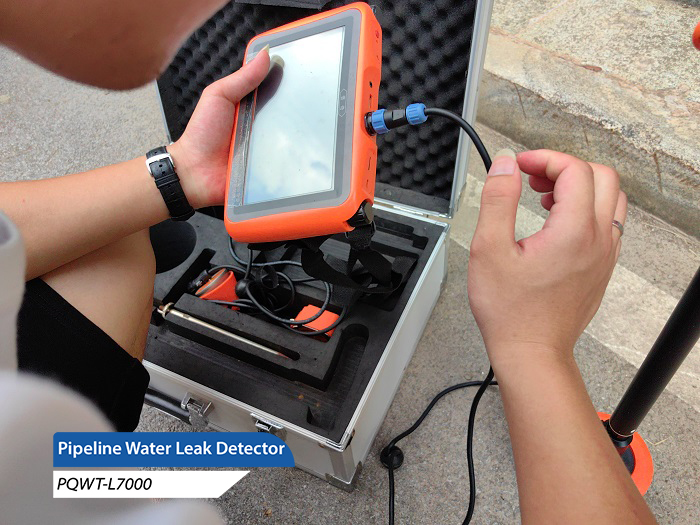In modern cities, water supply pipelines are like the bloodline of the city, constantly delivering life-giving water to the city. However, any problem with these pipes hidden underground, such as water leakage, will not only cause water waste, but also lead to serious problems such as ground subsidence and damage to building foundations. Therefore, professional pipeline leakage detection is particularly important.

Generation and propagation of water leakage sound waves
When a water supply pipe leakage occurs, due to the role of the pressure difference between inside and outside the pipe, the water will escape from the point of breakage and have a certain speed. The velocity and viscosity of this water flow will produce two mechanical movement processes, which in turn form the water leakage sound wave.
The first is the friction between the water flow and the pipe wall, and this friction creates vibrations that propagate along the pipe to the sides in the form of fluctuations. This sound wave can be used to prelocate leaks at exposed points, such as sluice wells, by means of the probe rod of an electronic leak detector.
The second is the vibration formed by the water column that impacts the soil medium around the pipe body after escaping from the breach. This vibration propagates in all directions in the form of a spherical wave. It is worth noting that the attenuation of this acoustic wave consists of two parts: the spherical dispersion propagating in the spatial direction and the thermal loss of the internal medium propagating in the radial direction.
Precise prelocation of water leakage noise
The closer the leakage noise propagates, the higher the sound intensity at that location. This means that when detecting water leakage sound waves along the pipe at ground level, there will be a maximum sound intensity near the point located at the ground projection of the leakage point. Using this feature, we can use the pipeline leak detector to accurately pre-locate the leak by listening to the sound at ground level.
In the detection, you need to connect the pipeline leak detector host, headphones and sensors, turn on the switch, wear a good headset, in the pipeline above the road surface placed pipeline leak detector sensors, according to the pace of the length of a step by step placement, step by step listening. The closer to the leak point, the stronger the signal; the farther from the leak point, the weaker the signal. By comparing the signal strength between different points, we can achieve the purpose of detecting the leak.
Consider additional factors to ensure accurate positioning
However, when detecting water leaks, it is not enough to rely on the pipeline leak detector to hear the leak signal at one point. We need to compare multiple points over and over again to determine the approximate location of the leak by comparing the strength of the sound vibrations.
At the same time, other additional factors need to be taken into account, such as the direction of the leak break. Since the pipe is circular, if there is a side leakage, it is possible that the larger point is instead on the side of the roadway above the pipe, rather than being on the roadway above the pipe. Therefore, it is important to be aware of the location of the pipeline to avoid missed inspections.
In addition, the direction of the pipeline, tee, bend, water pressure, burial depth, buried layer and other factors will also have an impact on the test results. These factors need to be taken into account when conducting the inspection to ensure that the location of the leak is accurately determined.
Professional pipeline leakage detection is a comprehensive and highly technical work. It requires not only high-precision pipeline leak detector equipment, but also experienced inspectors. Only by taking all factors into consideration can we ensure that we can find the leaks accurately and quickly, so as to protect the normal operation of the city. Let's work together to guard the bloodline of the city and contribute to a better city life.








